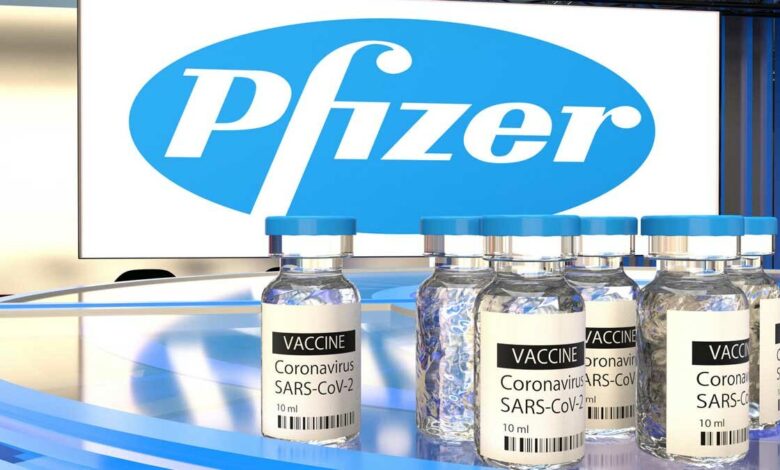
Pfizer is the new favorite in the fight against the pandemic. So what does this mean for Moderna and others?
The critical event of last Friday was the news about the successful trial of a new drug from COVID-19. Pfizer (PFE) has invented an oral medication (pill) that kills the coronavirus with a probability of close to 90%. Manufacturers of vaccines and antibodies are in deep decline. Airline papers and even casinos are growing. The market is celebrating the imminent victory over the pandemic. Let’s figure it out. What is the value of the new pill?
The drug from Pfizer (called Paxlovid) is one of the two leading candidates for a mass drug from COVID-19. It does not require injections and reduces the risk of hospitalization by 99% at an early detection stage.
Only 1% of patients are admitted to the hospital if they take it in the first three days. However, the medicine on the fifth day after the first symptoms, the effectiveness decreases slightly – up to 89% (11% of those who took it may require hospitalization).
It is in any case better than that of Merck’s closest competitor, whose medicine has shown the effectiveness of about 50%. At the same time, the proportion of side effects after taking Paxlovid is at the placebo level and even below it.
Found Weak reactions in 19% of those who took medicine and 21% of those who took a pacifier. In other words, the effect could occur for any other reasons, including the influence of the disease itself.
Of the big players in the pharmaceutical market, Moderna (MRNA) suffered the most challenging news of all. The recent favorite of the anti-weed race fell by 16.5% on Friday. At the premarket on Monday, the downtrend persists. The Pfizer drug is just one of the factors behind Moderna’s decline. On Thursday, there was a disastrous quarterly report.
Moreover, it missed significantly: by 14% and 18%, respectively. In total, the paper has lost 32% since the beginning of the month. In the biotechnology sector, in addition to Moderna, dozens of companies associated with the vaccine market experienced the most substantial drop in a long time (up to 75%). For example, German BioNTech, Pfizer’s partner in producing COVID-19 serum, fell by 21% in one session.
In the segment of classical medicines, the market giants such as Merck (MRK) (-9.9%), Eli Lilly (-2.2%), AstraZeneca (-1.2%), Sanofi (-1%), Johnson & Johnson (-0.7%) sank. There is a noticeable trend: the less dependent a company is on drugs related to COVID-19, the weaker it falls. The exception is Merck, whose pill from COVID-19 still looks less promising than Pfizer’s.
Some are growing together with Pfizer (+11% in the last session). For example, the little-known biotech Enanta Pharmaceuticals, which is working on a drug with a similar principle of action (blocks the reproduction of the virus), rose in price on Friday by 11%. The paper in St. Petersburg.
In total, more than a dozen niche biotechs showed strong growth (from 10% to 30%). Among the representatives of big pharma, they grew against the general decline of the market or kept neutral — GlaxoSmithKline (not yet traded in St. Petersburg), Bristol-Myers Squibb (BMY), AbbVie (ABBV). Among them, it is worth looking for the primary beneficiaries of a desirable future.
Against the background of a total sale, the company went well below the industry multipliers and technically found itself behind the oversold line. Forward P/E values the company at only nine units. It is now the cheapest (along with Regeneron) of the significant biotechs on the market. According to the RSI (14 days), the action came to 25 units.
We can say that the sales had a significant emotional color and the rise in the coming sessions is inevitable – unless, of course, some new negative appears. The nearest target is $250, near which the 200-day moving average passes.
The following critical level is $290 (+22%), but it may take more than one week to climb there. The current consensus on the paper is $305.
The chip is growing on expectations of future sales, although the company is, in fact, at the second stage of research. Fundamentally, it remains inexpensive (P/E=15, forward P/E=12), but technically it has risen to the overbought zone (RSI above 72).
We can expect that the stock will have a short consolidation in the $ 47-49 zone, after which the road will be open for a hike to summer highs in the $ 50-52 area and then higher. The current consensus is very moderate: only $47. With a positive development of events with Paxlovid, the average target of investment houses for shares will be 15-20%.
She became a victim of a new covid race against her will. In a recent report, the company did not focus on its drug. At the same time, the last quarter and forecasts for the end of the year are solid. So there is no reason to doubt that the papers will show a quick rebound up.
The company benefits from a scenario of a quick exit from the pandemic rather than a race with Pfizer. Merck’s portfolio of drugs for age-related diseases, not antivirals or vaccines. Now there are exciting levels for entering the company’s shares for an average period.
Before the drawdown, by an excellent report and forecasts. Now there is less tension in the paper. The multipliers are average, and the RSI gives a neutral signal. Merck’s average target ($97) is still growing by almost 18%.